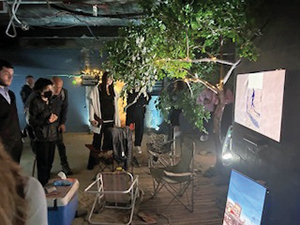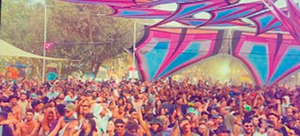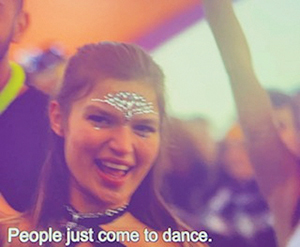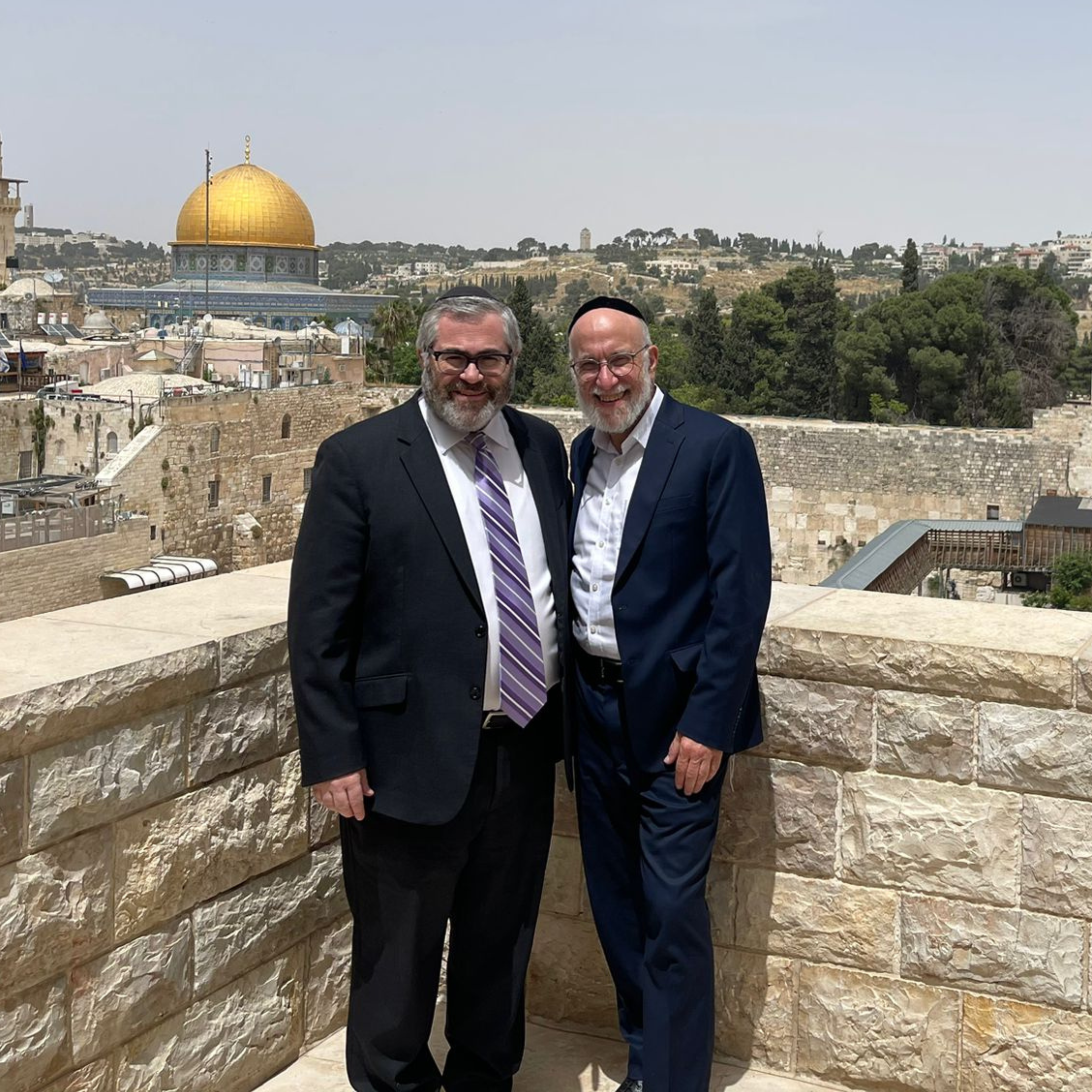
Walking through the Nova Festival Exhibit in Lower Manhattan is a visceral and heartbreaking experience. The installation attempts to recreate a real sense of the festival in Israel that was cut short by Hamas’s attack on October 7. The exhibit premiered in Tel Aviv for 10 weeks. It has been on display in New York City since April 21 and will continue until May 23.
After getting their bags screened, ticket-holders are ushered into a room to view a five minute movie on a large screen. In the film, Nova Festival staffers speak about the positivity of the festival as the visitors watch the Nova revelers dance in slow motion.
“You just look people in the eye and you see how happy they are and how they are enjoying celebrating life,” said one Nova staff member. “There are soldiers, high-tech people, teachers, school principals, everyone who just wants to dance.”

“It’s a sense of freedom, of love, of letting go. A place where everyone is welcome.. that everything is possible…that you can be who you are, let go and just..be.”
Some staff members mentioned the importance of the sunrise—coincidentally the time at which the terrorists invaded. “Sunrise at a festival is its greatest moment. The sunrise epitomizes the whole event. Sunrises are magical moments. There’s only the music and the sun and an energy you can’t describe.”
Another added, “The sunrise that day was one of the most beautiful I’ve ever seen. Everyone was dancing like crazy. It was extremely beautiful, like we knew that it would be the last dance.”

The movie ends as the DJ onstage is told to stop the music. The dancers’ protests last for a few seconds, until the words, “Tzeva Adom”—“Red Alert” are heard.
At the movie’s conclusion, the visitors walk into the exhibit. The feeling is that of walking into the festival itself. In a large dark room, trees are decorated with lights, upbeat techno music plays in the background,and tents with personal items fill the corners. Near each tent stands a screen where videos play on a loop.
The early screens project videos from the terrorist’s point of view, taken from Hamas members’ phones and GoPros. The videos show them leaving Gaza on motorbikes and trucks. The audience listens to their Arabic, which is translated using English subtitles on the bottom of the screens. The terrorists joke with each other, they argue and bicker, and their voices are filled with happy excitement. They call out, “Come on, guys,” and they give instructions to one another. They remind each other to say “Allah is great!” One terrorist calls to another, “We are on our way to Paradise!” Another cackles, “Soon you’ll see things you never dreamed of,” to which his friend responds, “I just can’t wait to fight!”

In videos that are difficult to watch, the terrorists shoot into cars, without a second glance, expressing frustration that they aren’t killing actual soldiers. Several screens play audio messages with English subtitles from phone conversations. One screen explains that this is a call a terrorist made to his family. “Dad, I’m calling you from the phone of a Jew. I murdered Jews! Your son has murdered Jews! Open your whatsApp, you’ll see the pictures!”
In contrast, the next audio screen shared a conversation between Romi Gonen, 23, and her mother, Meirav, as Romi hid from the terrorists, right before she was kidnapped. Meirav spoke to her in a soothing voice, saying, “Romichu, you’re not alone. I’m with you, sweetie. Everything is going to be okay. We’ll go to the hospital and everything will be okay and you’ll feel better, my pretty girl. I just need you to tell me the color of the car. Okay darling? Just the color of the car, so it’ll be easy to find you, my pretty girl.”
As the visitors walk further into the room, the screens show footage from the Nova Festival after the red alert. These are videos that people took with their phones. The party-goers at this point are confused and not yet understanding the danger. One can see and hear the confusion and chaos erupting in the background. “I’m in shock. What’s with all these rockets?” one girl exclaims into her phone, walking with her friend. “Let’s go to the kanta, all our stuff is there.” Soon, the clips portray the next stage, with people running for their lives, some saying video goodbyes to their families, lying under bushes or in cars.
After footage showing the actual taking of hostages by Hamas, the following screens portray the Israeli soldiers and police arriving at the devastated festival site. Desperately searching for wounded people, they only find dead bodies. Their voices indicate that the sights they were encountering were shocking to them. They yell to each other, counting the bodies, with audible grief and horror choking their voices. As one soldier walks through the area with his gun held out, he frantically calls out, “Can anyone give us a sign of life? Please! Can anyone answer me?”

The final area includes replicas of the makeshift bars and vendors from the festival, along with screens featuring interviews with survivors. The survivors describe the scenes they witnessed and how they escaped, and talk about their personal struggles afterwards living with the trauma, insomnia and tremendous feelings of guilt.
Omri Sasi, a DJ and producer from the Nova Festival, lost several family members that day. He explained that he eventually got involved in helping other Nova survivors by creating a space for them to come and connect with one another. He said it’s the only thing that calms his mind. “Our community suffered the most deaths. The Nova community had the highest number of murdered people. My life is changed forever. Everything I do—they are with me. They see everything. And when I go, I’ll be with them. I’ll dance with them again, up above. It’s better there than here.”
Radda Sgim, the owner of Taboonia Druze Catering, was working at the festival. He described seeing terrorists gleefully committing brutal murder. “Seeing what I saw, normal human beings shouldn’t see that. We shouldn’t see that.”
Ahiya Meir Malul, an artist and festival survivor, said, “I saw people getting hit by bullets, and you’re so conflicted because you want to go help them, but then you will get hit. So, you panic and think: What am I supposed to do?”

Towards the end of the exhibit, large silent video installations depict individuals dancing at the festival. Before leaving, visitors can walk through a room with color photos as well as brief descriptions of each individual who was killed there.
The sign by the exit reads, “We will forever remember the beautiful angels who shined on the dance floor and are now dancing in heaven. Your light will never be extinguished.”










